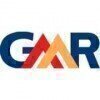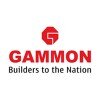Filter interviews by
Gulermak-Tata Projects JV Safety Engineer Interview Questions and Answers
Gulermak-Tata Projects JV Safety Engineer Interview Experiences
1 interview found
I applied via Approached by Company and was interviewed in May 2023. There were 2 interview rounds.

(2 Questions)
- Q1. So many questions related to site safety ..
- Q2. Like related to site activity
Interview Preparation Tips
Top trending discussions






Interview questions from similar companies

I applied via Approached by Company and was interviewed in Mar 2024. There was 1 interview round.
(4 Questions)
- Q1. Job summary work profile etc.
- Q2. Annual salary and expectations
- Q3. Salary negotiation
- Q4. Joining date etc.
Interview Preparation Tips

I applied via Approached by Company and was interviewed before Oct 2022. There were 3 interview rounds.

(1 Question)
- Q1. Qualifications and requirements
(4 Questions)
- Q1. Past Project work activity and inputs
- Q2. Why you want to leave your current company
- Q3. Job profile & technical skills
- Q4. If we give same salary as previous company would you join our company
Interview Preparation Tips
- Get strong in basic knowledge
Most important, always add some humor in your answer and be comfortable in talking with the interviewer.

I applied via Naukri.com and was interviewed in Apr 2022. There were 2 interview rounds.

(2 Questions)
- Q1. Safety related questions and details about my self
- Q2. Previous experience
Interview Preparation Tips

Safety Engineer Interview Questions & Answers
Larsen & Toubro Limitedposted on 3 Jun 2022
(1 Question)
- Q1. Safety of civil mechanical and electrical work for side
Interview Preparation Tips

I applied via Recruitment Consulltant and was interviewed in Oct 2024. There were 2 interview rounds.
(2 Questions)
- Q1. What are precautions of work at height
- Ans.
Precautions for working at height include proper training, use of fall protection equipment, regular inspection of equipment, and securing tools and materials.
Ensure workers are properly trained on working at height procedures
Use appropriate fall protection equipment such as harnesses, lanyards, and guardrails
Regularly inspect all equipment used for working at height to ensure it is in good condition
Secure tools and ma...
- Q2. What are you know about lifting plan.
- Ans.
A lifting plan is a detailed document outlining the procedures and precautions to be taken when lifting heavy objects.
A lifting plan should include the weight of the object being lifted
It should specify the equipment to be used for lifting
The plan should outline the steps to be taken to ensure the safety of workers involved
It should also consider factors such as the location of the lift and any potential hazards
Regular...
(2 Questions)
- Q1. What is risk assessment
- Ans.
Risk assessment is the process of identifying, analyzing, and evaluating potential risks in order to determine the likelihood and impact of harmful events.
Identifying potential hazards and risks in the workplace or environment
Analyzing the likelihood of these risks occurring
Evaluating the potential impact of these risks on people, property, and the environment
Developing strategies to mitigate or eliminate these risks
Re...
- Q2. How to calculate capacity of wire rop sling
- Ans.
Capacity of wire rope sling can be calculated by considering factors like diameter, material, and configuration.
Capacity is determined by the breaking strength of the wire rope and the design factor used.
Calculate the breaking strength of the wire rope by multiplying the area of the rope cross-section by the tensile strength of the material.
Consider the configuration of the sling (single leg, double leg, etc.) and appl...

Safety Officer Interview Questions & Answers
Simplex Infrastructuresposted on 18 Nov 2023

(1 Question)
- Q1. Salary Discussed
(2 Questions)
- Q1. What is Responsibility of Safety Officer
- Ans.
Safety Officer is responsible for ensuring the safety of employees, implementing safety protocols, conducting safety inspections, and promoting a culture of safety in the workplace.
Implementing safety protocols and procedures
Conducting safety inspections and audits
Training employees on safety practices
Investigating accidents and incidents
Ensuring compliance with safety regulations
Promoting a culture of safety in the wo
- Q2. Site Monetring. Training conducted Site Inspection Follow Legal Compliance Hazard identify and apply Suitable control measure to reduce hazard Tools Takles Inspection mock drill

Safety Supervisor Interview Questions & Answers
Shapoorji Pallonji Groupposted on 31 Jan 2024
(2 Questions)
- Q1. What is safety what is hazard
- Ans.
Safety is the state of being protected from harm or danger. A hazard is a potential source of harm or adverse health effects.
Safety refers to measures taken to prevent accidents, injuries, or harm to individuals or property.
Hazards are conditions or situations that have the potential to cause harm, such as chemicals, machinery, or unsafe work practices.
Safety supervisors are responsible for identifying and mitigating h...
- Q2. How to use fire hydrant
- Ans.
A fire hydrant is used to access a water supply for firefighting purposes.
Locate the fire hydrant in the vicinity.
Remove the hydrant cap or cover.
Attach a fire hose to the outlet of the hydrant.
Open the hydrant valve to release water.
Control the flow of water using the hydrant valve.
Close the hydrant valve and remove the hose when finished.

Interview Questionnaire
9 Questions
- Q1. Whatvis mean risk assessment
- Ans.
Risk assessment is the process of identifying, evaluating, and prioritizing potential risks to determine appropriate control measures.
Risk assessment involves identifying hazards and potential consequences.
It evaluates the likelihood and severity of each risk.
Prioritization helps in determining which risks require immediate attention.
Control measures are implemented to mitigate or eliminate identified risks.
Examples in...
- Q2. What's is mean by hazards
- Ans.
Hazards refer to potential sources of harm or danger that can cause injury, illness, or damage to property.
Hazards can be physical, chemical, biological, or psychological in nature.
Examples of hazards include slippery floors, toxic chemicals, infectious diseases, and workplace stress.
Identifying and assessing hazards is an important part of ensuring safety in any environment.
Effective hazard control measures can help t...
- Q3. Wahis mean by work permit
- Ans.
A work permit is a document that authorizes a person to perform a specific job or task in a designated area.
Work permits are used to ensure that work is carried out safely and efficiently.
They are typically issued by a supervisor or manager and must be obtained before starting work.
Work permits may include information such as the type of work to be performed, the hazards involved, and the safety precautions that must b...
- Q4. Whas is mean by msds
- Ans.
MSDS stands for Material Safety Data Sheet.
MSDS is a document that provides information about the hazards of a particular substance or product.
It includes information on the chemical composition, physical properties, and safe handling procedures.
MSDS is required by law for all hazardous substances and products.
It is important for workers to have access to MSDS to ensure their safety in the workplace.
- Q5. What's is mean by lti
- Ans.
LTI stands for Lost Time Injury, which refers to a work-related injury or illness that results in time off from work.
LTI is a common safety metric used in workplaces to track and analyze workplace injuries and illnesses.
It is calculated by dividing the number of lost workdays by the total number of hours worked.
LTI is an important indicator of workplace safety and can help identify areas for improvement.
For example, if...
- Q6. What is mean by hot work
- Ans.
Hot work refers to any activity that involves open flames or generates heat and sparks.
Examples include welding, cutting, brazing, soldering, grinding, and using a torch.
Hot work requires a permit and must be conducted in a designated area with proper ventilation and fire safety measures.
Workers must wear appropriate personal protective equipment (PPE) and be trained in hot work safety procedures.
Hot work can pose a se...
- Q7. What is mean by cold work
- Ans.
Cold work refers to any work that is done on a metal at room temperature or below.
Cold work can include processes like bending, punching, or rolling.
It can increase the strength and hardness of the metal, but can also make it more brittle.
Cold work is often used in the manufacturing of metal products like pipes, wires, and sheet metal.
It is important to take safety precautions when performing cold work, as it can creat
- Q8. What's is mean by hieght work
- Ans.
Height work refers to any work that is performed at a height above ground level.
Examples of height work include working on rooftops, climbing ladders, and working on scaffolding.
Height work requires proper safety equipment such as harnesses, helmets, and safety ropes.
Workers performing height work should be trained in proper safety procedures and should be aware of the risks involved.
Height work can be dangerous and ca...
- Q9. What is mean by excavation
- Ans.
Excavation refers to the process of digging or removing earth or other materials from the ground.
Excavation is commonly used in construction and mining industries.
It involves the use of heavy machinery such as excavators, bulldozers, and backhoes.
Excavation can be done for various purposes such as building foundations, laying pipelines, or creating underground tunnels.
Safety measures such as shoring, sloping, and bench...
Interview Preparation Tips

I applied via Walk-in and was interviewed in Aug 2021. There was 1 interview round.
Interview Questionnaire
3 Questions
- Q1. Hii.. any vacancy in fire & safety officer ..so inform to me.. email I'd ***** ... contact no.XXXXX
- Q2. Hjjjjjjjjjjjjjjhh
- Q3. Ffghjjjiiiiji
Interview Preparation Tips
Gulermak-Tata Projects JV Interview FAQs
Tell us how to improve this page.
Interview Questions for Popular Designations
- Safety Manager Interview Questions
- Senior Safety Officer Interview Questions
- Senior Safety Engineer Interview Questions
- Safety Officer Interview Questions
- Fire & Safety Officer Interview Questions
- Safety Supervisor Interview Questions
- Fire & Safety Supervisor Interview Questions
- Senior Safety Supervisor Interview Questions
- Show more
Interview Questions from Similar Companies
|
Assistant Manager
7
salaries
| ₹8.4 L/yr - ₹11.1 L/yr |
|
Civil Engineer
6
salaries
| ₹3 L/yr - ₹6.5 L/yr |
|
Senior Accounts Officer
5
salaries
| ₹8.2 L/yr - ₹8.9 L/yr |
|
Senior Civil Engineer
4
salaries
| ₹5.7 L/yr - ₹7 L/yr |
|
TBM Operator
4
salaries
| ₹14.5 L/yr - ₹22 L/yr |

Larsen & Toubro Limited

Hindustan Construction Company

Afcons Infrastructure

Simplex Infrastructures
Calculate your in-hand salary
- Home >
- Interviews >
- Gulermak-Tata Projects JV Interview Questions >
- Gulermak-Tata Projects JV Safety Engineer Interview Questions






